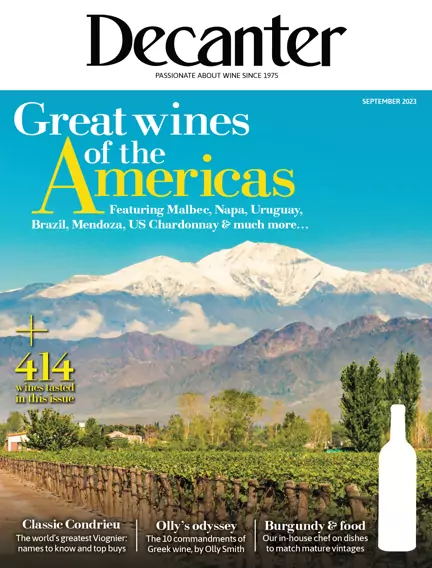PANEL TASTING
Oregon in the northwest and California’s Sta Rita Hills and other coastal regions stood out particularly in this enjoyably broad and high-scoring assessment of what remains a hugely popular range of wine styles
Chardonnay:the chicken of the wine world. A blank canvas upon which winemakers can draw their own style. And just like artists, some draw well, and some draw badly. As a winemaker, there are many tools that can be used to give flavour to Chardonnay. Inherently it is a neutral-tasting grape variety that’s high in acidity. So the flavours can be manipulated in the winery.
The wine can be left in contact with oak (French, American or even staves or oak chips inside a large vat) for short or long periods. Winemakers can decide to leave it on its gross lees (the yeast sediment and matter left over after fermentation) and regularly stir these into the wine – known in Burgundy as batonnage – to give the wine weight and texture. And then, they can do a certain amount of malolactic fermentation to reduce the tart malic acidity into a broader and creamier lactic acid, which will flesh out the wines even further.
So this can bring myriad different flavour combinations to the wines, from the taut, lean, saline oyster shell styles found in Chablis, to elegant, richer styles that combine some tropical and orchard fruit with an underlying fine minerality and just a whiff of expensive oak vanilla and toast. As Eugenio Egorov pointed out: ‘Winemakers are now focusing on highlighting the purity of each region and how Chardonnay can develop its own beautiful identity in its local environment. Across the board I found fresh and delicate gems.’
Sometimes, though, winemakers can balance richness, acidity, alcohol and oak wrongly. Oak chips can add a ‘cornflake’, tinned sweetcorn, cloying finish to the wines.Sweet fruit without acid and high alcohol can just be unpleasant to drink. ‘How would you like your popcorn, sir? We can do it salty, sweet or with extra butter…’
For this panel tasting, we covered a vast area, across the USA, and therefore we saw a lot of different styles and skills. The results reflect this (see ‘The scores’, below), and were a very acceptable outcome, considering the scale of the area represented. ‘I came away with a renewed appreciation for the diversity of Chardonnay in the United States,’ said Egorov.
With so much winemaker technique going on in a wide selection of wines, sometimes a region’s terroir was overpowered – but, unsurprisingly, the cooler sites fared better. So, Oregon’s Willamette Valley and coastal areas of California – where cool Pacific air and water are brought by the Humboldt current resulting in the famous morning fog. Sonoma Coast showed less strongly than expected, and Napa Valley was a mixed bag. Santa Barbara, and especially the Sta Rita Hills, show

